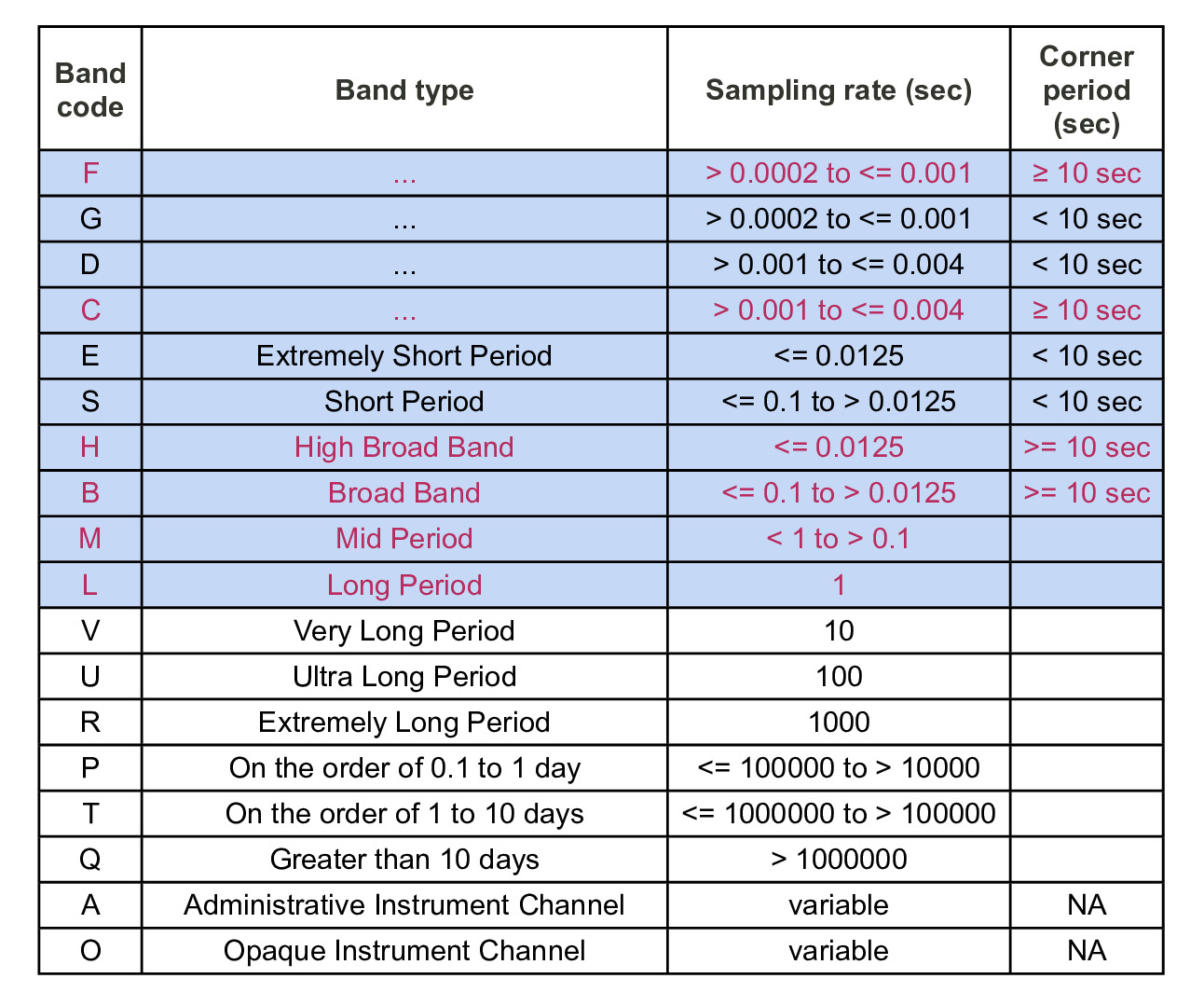Table of Contents
Channel Codes of Seismograms
Seismic networks, such as the Global Seismographic Network (GSN), generally involve various types of instruments with different bandwidths, sampling properties and component configurations. There are standards to name channel codes depending on instrument properties. IRIS (http://www.iris.edu) uses SEED format for channel codes, which are represented by three letters, such as LHN, BHZ, etc. In older versions of the SPECFEM3D Cartesian package, a common format was used for the channel codes of all seismograms, which was BHE/BHN/BHZ for three components. To avoid confusion when comparison are made to observed data, we are now using the FDSN convention (http://www.fdsn.org/) for SEM seismograms. In the following, we give a brief explanation of the FDSN convention used by IRIS, and how it is adopted in SEM seismograms. Please visit http://www.iris.edu/manuals/SEED_appA.htm for further information.
Band code: The first letter in the channel code denotes the band code of seismograms, which depends on the response band and the sampling rate of instruments. The list of band codes used by IRIS is shown in Figure 1.1. The sampling rate of SEM synthetics is controlled by the resolution of simulations rather than instrument properties. However, for consistency, we follow the FDSN convention for SEM seismograms governed by their sampling rate. For SEM synthetics, we consider band codes for which $dt\leq1$ s. IRIS also considers the response band of instruments. For instance, short-period and broad-band seismograms with the same sampling rate correspond to different band codes, such as S and B, respectively. In such cases, we consider SEM seismograms as broad band, ignoring the corner period ($\geq10$ s) of the response band of instruments (note that at these resolutions, the minimum period in the SEM synthetics will be less than $10$ s). Accordingly, when you run a simulation the band code will be chosen depending on the resolution of the synthetics, and channel codes of SEM seismograms will start with either L, M, B, H, C or F, shown by red color in the figure.

Instrument code: The second letter in the channel code corresponds to instrument codes, which specify the family to which the sensor belongs. For instance, H and L are used for high-gain and low-gain seismometers, respectively. The instrument code of SEM seismograms will always be X, as assigned by FDSN for synthetic seismograms.
Orientation code: The third letter in channel codes is an orientation code, which generally describes the physical configuration of the components of instrument packages. SPECFEM3D Cartesian uses the traditional orientation code E/N/Z (East-West, North-South, Vertical) for three components when a UTM projection is used. If the UTM conversion is suppressed, i.e. the flag SUPPRESS_UTM_PROJECTION is set to .true., then the three components are labelled X/Y/Z according to the Cartesian reference frame.
EXAMPLE: The sampling rate is given by DT in the main parameter file DATA/Par_file. Depending on the resolution of your simulations, if you choose a sampling rate greater than $0.01$ s and less than $1$ s, a seismogram recording displacements on the vertical component of a station ASBS (network AZ) will be named AZ.ASBS.MXZ.semd.sac, whereas it will be AZ.ASBS.BXZ.semd.sac, if the sampling rate is greater than 0.0125 and less equal to 0.1 s.
This documentation has been automatically generated by pandoc based on the User manual (LaTeX version) in folder doc/USER_MANUAL/ (Dec 20, 2023)